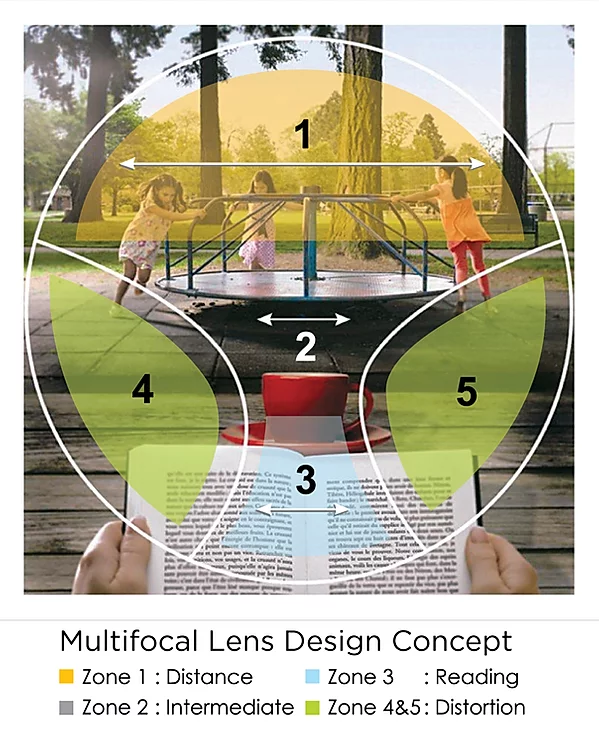Know What’s Best For Your Eyes

It all starts with having to hold the menu or newspaper at arm’s length and feeling that your arms “aren’t long enough” to hold a newspaper or magazine at a position where you can read it clearly and the next thing you know, you’re having the reading issue, you may called it as presbyopia.
It’s completely normal. Sometime after age 40, everybody gets presbyopia!
What Is Presbyopia?
Presbyopia is an eye condition in which your eye slowly loses the ability to focus quickly on objects that are close. It’s a disorder that affects everyone during the natural aging process. Most people lose some ability to focus on close objects by age 40. It affects everyone, but some people notice it more than others.
Common symptoms of presbyopia are:
The most common symptoms of presbyopia occur around age 40 for most people. The symptoms of presbyopia typically involve a gradual deterioration in your ability to read or do work up close.
- having eyestrain or headaches after reading or doing close work
- having difficulty reading small print
- having fatigue from doing close work
- needing brighter lighting when reading or doing close work
- needing to hold reading material at an arm’s distance to focus properly on it
- overall problems seeing and focusing on objects that are close to you
- squinting

No cure exists for presbyopia. However, there are several treatments available to correct your vision. Depending on your condition and lifestyle, you may be able to choose from corrective lenses to correct your vision.
WHAT IS MULTIFOCAL LENS?
Multifocal Lens (a.k.a Progressive Lens) is the lenses with multiple prescriptions all in one lens. Multifocal lenses contain two or more lens powers to help you see objects at all distances after you lose the ability to naturally change the focus of your eyes due to age (presbyopia)

Advantages to Multifocal:
Multifocal offer a range of benefits, among them:
- Better visual acuity for the range of distances from near to far
- A less abrupt switch between prescriptions
- Easy transition between the range of different prescriptions.
- Convenience of being able to see in almost any situation without ever needing extra eyewear.
The ability to see in most conditions without extra eyewear.
The power of multifocal lenses changes gradually from point to point on the lens surface, providing the correct lens power for seeing objects clearly at virtually any distance.

Power changes progressively
The top part of lens (Zone 1) – used to see distance object.
The middle part of lens (Zone 2) – used to see intermediate object like computer. This “intermediate” power of a Multifocal lens is located in a thin horizontal zone between the distance and near power zones.
The lower part of lens (Zone 3) – used for reading. This zone for near vision is the combination of the lens prescription for distance vision plus an added amount of magnifying power to help you see small print and near objects more clearly.
The right Multifocal Lenses for you
There are many brands of Multifocal Lenses, and most brands have several different designs for specific wearers’ needs. Seek the services of a knowledgeable optician to be custom-fitted with progressive lenses that best suited to your needs.
Your optician also can give you helpful tips on how to quickly become accustomed to wearing your new progressive lenses and how to care for your eyeglasses to continue seeing clearly and to protect your investment.
The right multifocal lenses for you will depend on your age, your visual needs, your budget and other factors. Ready to start seeing better? It starts with an eye exam to update your prescription.
For more information on Multifocal eyeglass lenses, visit MOG eyewear.
Sources from:
- Gary Heiting (2018), Bifocals And Trifocals: Solutions For “Short Arms”, https://www.allaboutvision.com/lenses/multifocal.htm
- Cooper Vision(2018), Multifocal Contact Lenses, https://coopervision.com/about-contacts/multifocal-contact-lenses
- Mayo Clinic Staff. (2014, October 17). Presbyopia, mayoclinic.org/diseases-conditions/presbyopia/basics/definition/con-20032261
- Boyd, K. (2013, September 1). What is presbyopia? aao.org/eye-health/diseases/what-is-presbyopia
- Anna Giorgi (2016, February 8). Presbyopia https://www.healthline.com/health/presbyopia
- Gary Heiting (2018), Progressive Lenses (No-Line Multifocals), https://www.allaboutvision.com/lenses/progressives.htm
